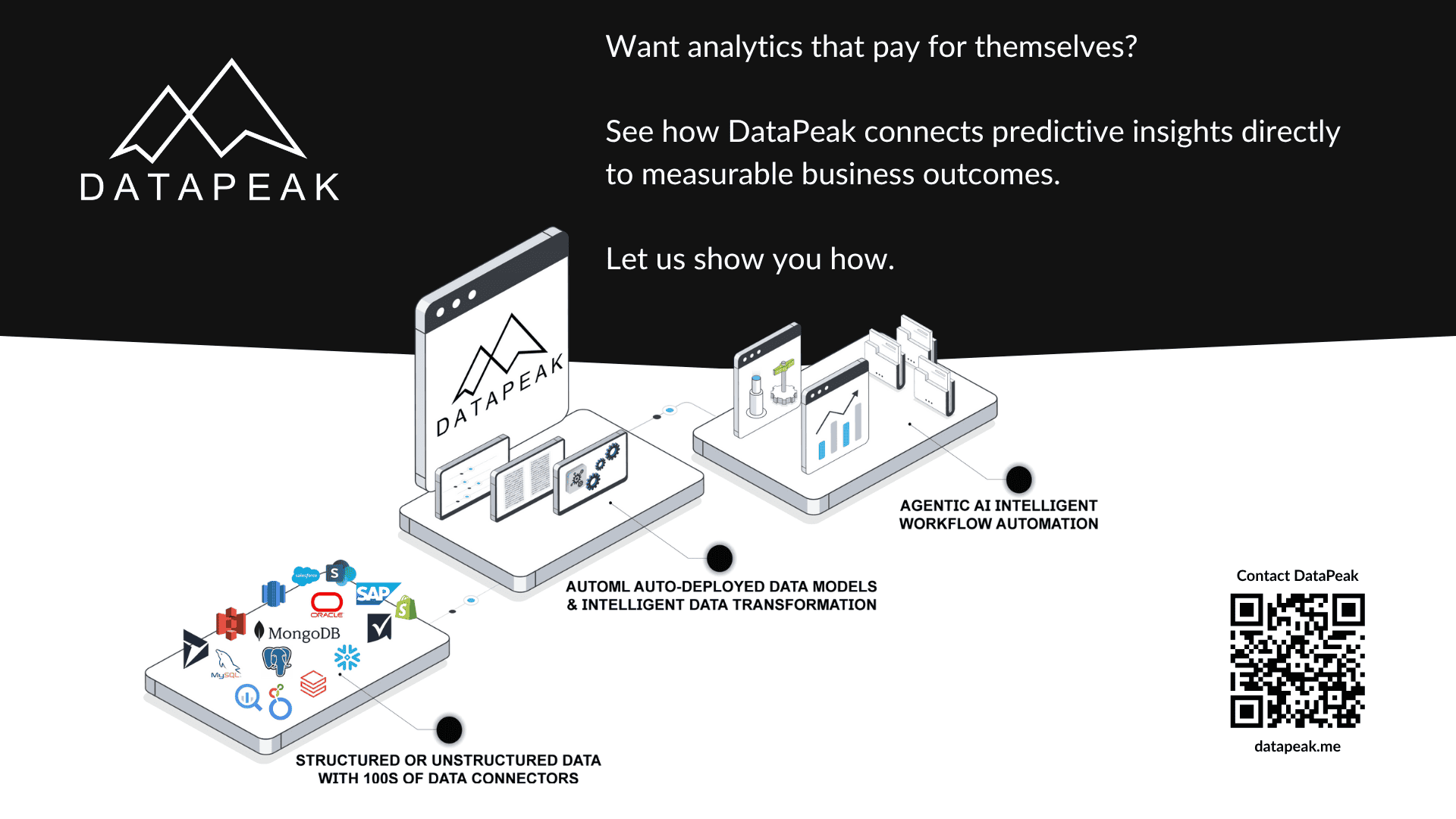The ROI of Predictive Analytics: Why Faster Insights Drive Better Results
Why ROI Matters in Analytics
For most organizations, analytics is treated as a reporting function. Data gets collected, reports are generated, and executives review them once a month. But here’s the problem: insights that arrive too late don’t create value.
Predictive analytics flips the equation. It doesn’t just tell you what happened, it gives you foresight into what’s likely to happen next. And when paired with agentic AI workflows, predictive analytics doesn’t just deliver insights, it delivers measurable ROI.
The Traditional ROI Problem
Analytics projects often struggle to prove value because they:
Deliver insights without connecting to action.
Require technical staff to interpret, slowing time-to-value.
Sit in silos, disconnected from workflows and business outcomes.
That leads to frustration: investments are made, but impact is unclear.
Predictive Analytics as a Value Engine
When predictive analytics is implemented properly, ROI becomes visible in three major ways:
Time Savings
Automate repetitive analysis tasks.
Reduce time spent on manual forecasting or report generation.
Free analysts to focus on higher-value strategy.
Cost Reduction
Detect risks earlier (fraud, downtime, demand spikes).
Optimize resources (inventory, staffing, procurement).
Cut waste caused by guesswork or delayed decisions.
Revenue Growth
Anticipate customer needs.
Improve targeting in sales and marketing.
Capture opportunities before competitors react.
How DataPeak Unlocks ROI Faster
DataPeak connects predictive analytics directly to action:
No-code queries → everyone, from analysts to executives, can ask questions and get answers instantly.
Agentic AI workflows → insights trigger automated actions, not just reports.
Scalable automation → predictions adapt across finance, supply chain, HR, or public sector settings without custom coding.
This combination turns predictive analytics from a cost center into a growth driver.
Example in Practice
A finance department uses predictive analytics to forecast cash flow risks.
Traditionally → the forecast would live in a spreadsheet, waiting for review.
With DataPeak → forecasts automatically trigger alerts, generate risk-adjusted reports, and initiate mitigation workflows.
Result: faster decisions, fewer surprises, and clearer financial ROI.
Measuring ROI in Analytics
To quantify results, organizations often track:
Decision speed → time saved between insight and action.
Error reduction → fewer costly mistakes or delays.
Efficiency gains → productivity improvements per department.
Financial outcomes → savings from risk avoidance or revenue lift.
With predictive analytics connected to workflows, these numbers move quickly, often within weeks, not years.
Why It Matters Now
Executives no longer ask whether AI is valuable. They ask whether it delivers results fast. Predictive analytics paired with automation makes ROI tangible: faster decisions, lower costs, and better performance.
In other words: analytics that pays for itself.
Faster Insights, Stronger Results
Predictive analytics doesn’t just forecast, it accelerates business outcomes. With DataPeak, every prediction is tied to action, ensuring ROI isn’t just promised, but proven.
Keyword Profile: DataPeak predictive analytics, predictive analytics ROI, business intelligence ROI, analytics value creation, enterprise data ROI, no-code predictive insights, agentic AI analytics


